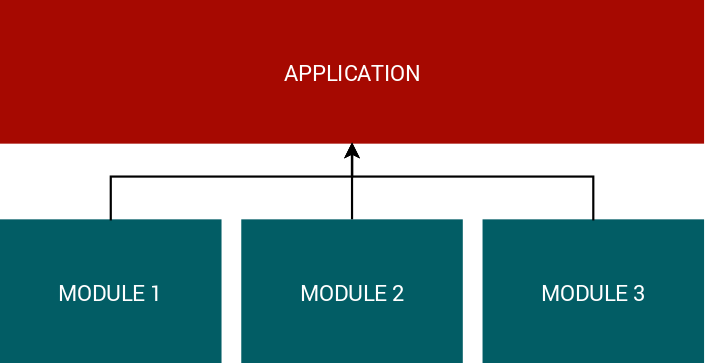Concord Overview
Concord's main feature is to enable Modules for Laravel Applications on top of Laravel's built in Service Providers.
Why Modules?
There are two major use-cases for using modular organization:
- Organizing Application Structure (within a single application)
- Creating Reusable Modules (across several applications)
Organizing An Application
Most of the business applications quickly reach the level of complexity where it matters the way the code is being organized. There are several approaches to organizing the code, and one of them is the modular structure - this is what Concord was built around.
In case a module lives within the app's codebase (ie. not installed via composer) then Concord calls that an in-app module. These modules shouldn't consider any code re-use, just keep related functionality in more or less decoupled modules.
Reusable Modules
Concord was written with extensible modules in mind. You may have code you're copypasting from one project to another, or even worse - starting from scratch over and over with minimal changes again. These repeating units can be outsourced to modules and can be used across several applications that use those modules in a specific, custom manner.
These kinds of modules are libraries, usually have their own repository and are typically installed with composer. Concord calls these external modules. These kinds of modules should consider that they'll be used by applications that probably want to alter or extend their basic behavior. Concord has quite several facilities to support that.
Example Scenario
You may have an in-house CMS module that can handle pages, posts in multiple languages. App "A" only want the pages feature in a single language while app "B" wants all the CMS features. Then comes your client of app "A" and says they want to assign a specific color to each page. You can decide whether you want to implement this in your common CMS module or just for app "B". With Concord you shall be able to do either of those.
Composing Parts
Modules consist of different parts like models (entities), controllers, config files, migrations, views, routes, requests, middleware, frontend assets and so on.
Laravel itself solves many of these problems, so whenever a solution in Laravel exists, it's being used.
Modules
Modules are the de-coupled implementations of the business logic and they have to comply with Concord's basic rules in order to be able to cooperate as a unified application.
Boxes
Boxes are optional. Think of them as "boilerplate" applications. They wrap several modules, and are subject to customization by the final Application.
Application
Any Laravel 5.5+ application can be a Concord compliant application that complies with its rules.
The application defines it's own logic and incorporates Concord modules and/or boxes.
Simple Layout (Modules Only)

Multi-box Layout

Why Boxes And Modules?
Reading further you'll see that some parts are advised to be kept in modules and others in boxes/application.
The reason behind is that modules should be kept decoupled, so whenever it's possible, they should not be aware of other modules. In case they really depend on another module, this dependency should be expressed explicitly (via composer). Number of dependent modules should be kept as low as possible.
Modules however need to be "glued" together, by pivot tables, aggregate classes, controllers, forms, event-listeners, etc. Concord encourages these kinds of parts to be implemented either in boxes or in the application. Boxes are technically modules as well.
Concord has a recommendation of which part should be implemented where. For example it's possible to define controllers in modules, but it is recommended that you rather implement controllers in boxes or in the application.
Next: Installation »